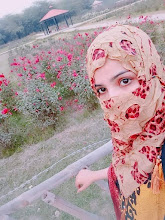The Story behind Great Indian Saree
It’s an enigma that one piece of clothing carries such an illustrious history, let’s dwell deeper into the story behind the great Indian Saree. A saree (also called sari) is a women’s garment from the Indian subcontinent. For many who have just recently come across this word, it might seem to be just an uncut piece of handwoven cloth but the saree is so much more than that. This is a garment with more than a millennium of legacy behind it. A paragon of religious and philosophical thought, India is responsible for many great works including the Upanishads and the Bhagavad Gita. All this diversity culminates in more than 1000+ types of sarees. So, let us dwell into what this uncut piece of handwoven cloth means.
#1 The diversity in economics
It’s not just the plethora of types but the cost of each saree varies too, a traditional Indian store can have sarees as cheap as under $10 (Rs. 700 approx.) and go as high as $40,000 (Rs. 30 Lakhs approx). This is due to the hosts of materials. Sarees can be made from silk, cotton, linen and polyester. With the latter being the cheapest in most cases. Sarees can also have gold zari and a multitude of other works that can enhance the beauty as well as the budget.
#2 The numerous draping styles
There are at least more than 100 ways in which you can drape a saree. Many enterprising fashion enthusiasts have uploaded tons of videos online showing off their skills. While it is very easy and quick to drape a saree, there are various ways that enhance the look and thus take more time.
#3 The Industry behind the Great Indian Saree
Unlike many of its counterparts in the fashion industry, sarees are made and operated by small-scale and cottage industries. There aren’t much big business captains in the production side and thus, this industry supports millions of workers across India.
#4 The tussle with time
While it is quite understandable that Sari is old in time considering it called a traditional garment, but who could have imagined it to be centuries old. Many suggest that saris are as old as 5000 years old—which is ridiculously shocking! Like many age-old traditions, the saree to grapes with the change. Over the years the saree has evolved a lot. From more complex iterations to even the name. The word sari described in Sanskrit which means ‘strip of cloth’ and sadi in Pali, and which evolved to sari in modern Indian languages.
#5 The types of Sarees
From silk sarees, which itself have more than 30 fabrics and more than 20 types of weaves. The types of sarees are numerous. They are differentiated on the basis of weave, geographic origin, embroidery, length and motifs. The sari is most commonly thought to be 9 yards in length. But given the various draping styles, saris often require different lengths for different drapes.
#6 The religious significance
The saree is an age-old apparel which has been intertwined with the cultural and religious ethos of India for many centuries. Though the origin was from a purely functional standpoint, the evolution and traditional significance of the saree, coupled with more than a century of cultural memory makes it very significant for religions in the Indian sub-continent. Many religions, especially Hinduism have dedicated ceremonies that are ideally done in sarees. For Indian women, it is fairly routine to dress in sarees for functions and ceremonies.
#7 The statement of pride
During the colonial period, a wave of western values was broadcasted by the British as a means to quell the awakening of the Indian Nation. This garment has a story very much intertwined in the struggle of Independence of India, where women used to boycott foreign garments and use this easy to make and wear the fabric as a display of national pride. Truly, no garment has such a rich story of the struggle behind it as the saree does.
#8 The complete outfit
Sarees nowadays are worn with a Petticoat/Blouse. If you did not know already, there was no concept of blouse and petticoats when it came to wearing a sari. In fact, women used to drape sari around themselves without them. It was only during the Colonial times that blouses and petticoats became popular. In the Victorian era, exposing one’s chest was considered immoral, and this notion of what is and is not moral was imposed on colonies—India being one of them.
#9 The meaning behind the saree.
Each saree represents a story, as it was made in a small cottage workspace. It tells a tale of the unique cultural perspective behind the place. The patterns used in Saris are traditionally important because each pattern represents something. In many saris, for example, you will find elephant motifs which are representative of water and royalty. On the other side, patterns including parrots represent passion. You will also find fish patterns on saris which represent resourcefulness and fertility. It is to be noted that in these changing times the designs are changing as well. There has been an increase in the production of floral motifs on saris. There has been the inclusion of modern designs as well.
#10 It has been there for many events
From battels to coronations, from Nobel Acceptance speeches to UN General Assembly addresses, sarees have been worn by many women as a mark of cultural pride.
from Everyone's Blog Posts - Fashion Industry Network https://ift.tt/3b7ZGJr



No comments: